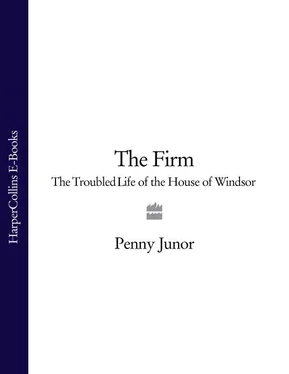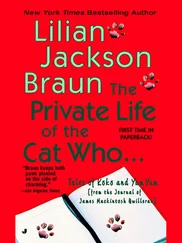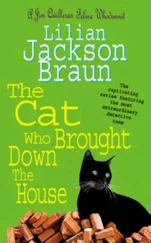1 ...8 9 10 12 13 14 ...24 All of this is run by a Board of Commissioners which employs experts in various fields of estate management, and under the Crown Estate Act of 1961 has a duty to maintain and enhance the value of the Estate. Management fees are taken out of the revenue, but the remainder – about £150 million – goes to the Treasury. Thirty-six million pounds from that sum is paid to the Queen, and the government pockets the rest to meet general government expenditure.
Even with my limited grasp of mathematics, the Queen is not the leech we have been led to believe. She does not cost the country a brass farthing, but is actually saving the taxpayer something like £114 million. If that money wasn’t coming from the Crown Estate you can bet your boots it would come from the taxpayer, and, indeed, if the Queen went mad and splashed out on a new aircraft, or a flashy new coach and spent too much the taxpayer would have to pay more for the shortfall. Parliament decides how much money the sovereign should have, and in that respect acts like a trustee of an old family trust, which in a constitutional monarchy is just as it should be. Parliament needs to make sure the Queen isn’t more of a financial burden than she has to be, not because it has to pay for her if she is, but because the more money there is left over after paying the Civil List, the more there is for general expenditure.
When Airlie arrived the Civil List was paid and reviewed annually, and this had been the arrangement since the 1970s when inflation had started running rampant. Some years it was running in double figures and each year there were increases in the Civil List, announced in Parliament, in line with inflation. From the public relations point of view this was bad news. It looked as though the Queen was being voted a 10 or 15 per cent pay rise, which, of course, was nonsense but made a very provocative headline. In practical terms it was disastrous too; government was so heavily involved in the detail and the everyday running of the organization, checking and rechecking expenditure to the point where it was impossible to make any long-term decisions and impossible to do what they wanted to do with the money. Airlie and Peat wanted the Treasury off their backs and were determined that the royal household should be master of its own destiny.
Their plan was to get the Civil List agreed for a ten-year period and be allowed to manage the money themselves, free from government interference. The Treasury agreed in principle; the difficulty was agreeing a figure, which, even if inflation continued to rise, would not leave the household short of funds. The Treasury’s refusal to acknowledge the existence of inflation made life difficult, but they found another way. They calculated the average rate of inflation during the past ten years, which was 7.5 per cent – acceptable to the Treasury – and settled on a figure for the ten-year period from 1 January 1991 of £7.9 million. If they had taken too much money, there was a deal that the surplus would roll over into the next ten years’ allowance. The Earl of Airlie took a punt. At the time, inflation was running at 9 per cent. If it had continued to rise the household would have run out of funds before the ten years were up and caused untold damage to the monarchy. As it was, inflation went down during the nineties and David Airlie was roundly praised for having struck such a good deal. Little did anyone know how very concerned he was that it might so easily have gone the other way.
Having stayed at the Palace on secondment from his own family firm for three years to implement the first round of changes and to work on the Civil List negotiations, Peat was persuaded to join the household for another three years to see in those changes which were announced by Margaret Thatcher in the House of Commons in 1990. For the first three years he had been called Administrative Adviser; but for the next three years, as a member of the household, he was called director of Finances and Property Services, a new title Airlie created to oversee a whole new business that was another calculated gamble.
Having established that the household had a ten-year Civil List to manage, it seemed sensible to bring the maintenance of the occupied palaces, run by yet another government department, under Palace control. And so they created a department called Property Services which covered not just the maintenance but everything involved in running the occupied royal palaces, from heating and cleaning them to mowing the lawns, training personnel and meeting fire, health and safety regulations. All of this had been farmed out many years before to the Department of the Environment (which became and is now the Department for Culture, Media and Sport) and they were spending over £20 million on the palaces. Peat and Airlie reckoned they could do it more cost-effectively themselves. It was yet another cry to be masters of their own destiny. They knew the buildings, knew what they wanted and knew whether a tap worked or not; why not take it over? And so once again they stuck their necks out. It was a mammoth undertaking, and, as they are the first to acknowledge in retrospect, quite brave. They had no expertise and, apart from the odd plumber on the books, no manpower; and there are a lot of occupied palaces – Buckingham Palace, St James’s Palace, Clarence House and Marlborough House Mews, the residential and office areas of Kensington Palace, the Royal Mews and Royal Paddocks at Hampton Court and Windsor Castle and buildings in the Home and Great Parks at Windsor. But they pulled it off. They effectively started up a brand-new business, contracted out some of the services such as cleaning, took on staff for other jobs, employed specialists and, while reducing the amount that was spent on the palaces, nevertheless carried out a huge number of improvements and came in well under budget. It was, and still is, paid for by the Department for Culture, Media and Sport by way of Grant-in-Aid, but the savings and improved efficiency have continued. For the last five years funding has remained at £15 million – savings of around £50 million since Peat took it over in March 1991.
By the time Michael Peat was due to return to Peat Marwick McLintock (by now renamed KPMG), in 1993, there was a great deal going on in which he was heavily involved. Fire had devastated Windsor Castle; another new department – Royal Enterprises, the trading arm of the Royal Collection – was just coming on-stream; there were plans for Royal Travel, Communications and the Historic Royal Palaces – all changes that he had recommended in his report – and he was far too busy to leave. KPMG, who had been paying him a very generous partnership share all the while, began to get restless and Peat had to make a choice: to stay at the Palace and see through what he had begun, or go back to a very lucrative number in the City and amass a fortune for his declining years. To his family’s chagrin he opted to stay, becoming Keeper of the Privy Purse, and has so far resisted all enticements to return. Indeed, in 2003 he took on the ultimate challenge and became Private Secretary to the Prince of Wales, just in time to field the fallout from the Burrell trial.
Peat is not universally liked; he is frequently described as lacking charisma, being a faceless accountant, a cold fish; but new brooms are seldom liked and it’s too easy to attach damning labels. He was effecting radical change in a cosy, hierarchical environment and interfering with working practices that no one has questioned for decades. He disturbed some well-feathered nests. No wonder he upset a few people along the way. As he has been heard to say, ‘We changed a huge amount in terms of the head; whether we changed the heart I don’t know.’ The heart was easier to change in those areas where staff were better educated, among those who come into the Palace in administrative posts – finance, press, property, private secretaries – but it was more difficult to change the heart in the domestic areas, the Mews, the Master of the Household’s department, areas where there was a very strong military background.
Читать дальше












